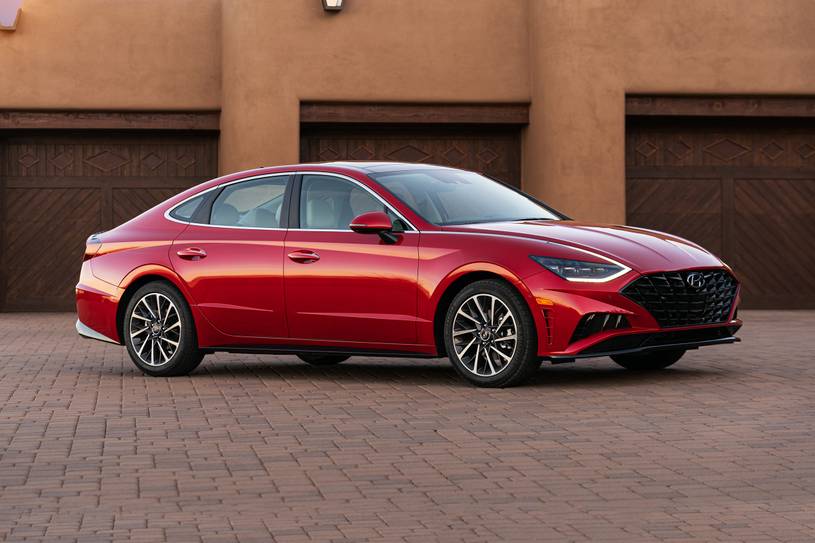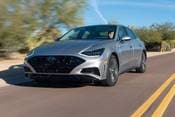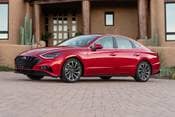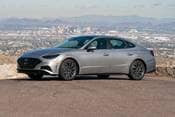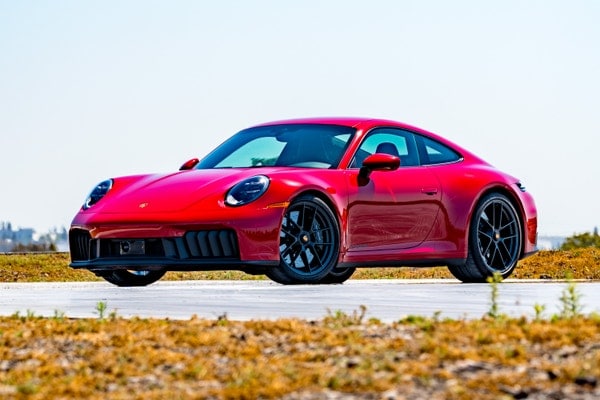First off, the 2020 Sonata, at least with the 1.6-liter engine, doesn't quite have the guts to live up to its sporty looks. For most drivers, this won't be an issue: The engine's low-end torque means the Sonata feels snappy enough off the line. Like many small turbocharged engines, however, this one runs out of juice as you approach the redline.
The Sonata's eight-speed automatic is generally smooth, and the delay between asking the car for more power and the transmission downshifting is pretty minimal. The combination of the eight-speed and 1.6-liter engine is easy to drive and reasonably efficient, but it won't set anyone's pants on fire. If you want speed, you're better off waiting for the N-Line or opting for a competitor with a punchier motor.
Our drive route featured mostly long, sweeping ribbons of Arizona state highway in various states of repair. The Sonata certainly feels planted and stable, and it changes direction firmly with good body control. The all-season tires can only offer so much grip in turns, though. Swapping them out for a moderate performance tire would wake up the Sonata even more.
The Sonata's steering also has more heft than the rival Accord's. But, as in the Accord, the steering seemed to lack feedback from the road. Still, it's quick and precise, and the weight makes it feel a bit sportier.
More impressive is how Hyundai has improved the Sonata's ride quality. The all-new chassis and suspension have elevated the Sonata's road comfort, even on the chewiest parts of the Grand Canyon State's weather-beaten roads, to a level on par with the class benchmarks. The harsher quality of earlier Sonatas remained one of the few areas where its Honda and Toyota rivals held the advantage. This new Sonata has closed the gap considerably.
We'll reserve final judgment for when we can complete a full in-house test of the 2020 Sonata. But our initial verdict is that it's still a perfectly capable performer for most sedan shoppers, and an even more compelling alternative to the Accord, Camry and Altima. Drivers looking for a little extra fizz will likely still be better served by something such as the Mazda 6.
We also had a chance to drive an early N-Line prototype around the genteel streets of Scottsdale, Arizona. Hyundai engineers on hand were at pains to remind us that the car had been built only days before and that everything about it was a work in progress. So while we'll need to wait to fully appreciate the N-Line's handling and power upgrades, we were able to give it the spurs briefly around a boulevard corner and a short empty stretch of road.
Clearly there's still a bit of work needed to smooth out the prototype's power delivery and transmission shifts. But it's also clear that this Sonata surges forward with more urgency than the standard car. We didn't notice any torque steer (which is the propensity of the steering in a high-power front-wheel-drive car to squirm left or right when you accelerate at full throttle) but we weren't availing ourselves of all N-Line's 290 horses, either. For what it's worth, Hyundai officials say the company has no plans for an all-wheel-drive Sonata.
